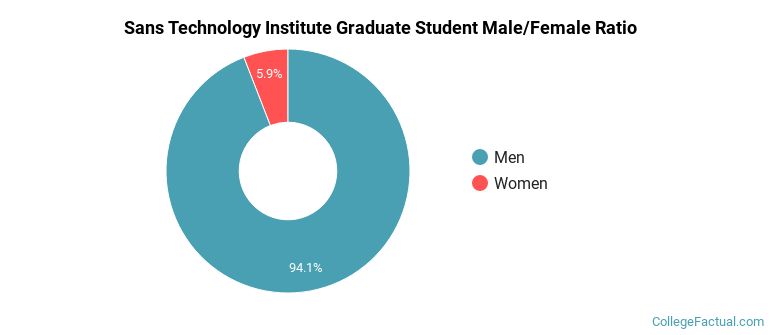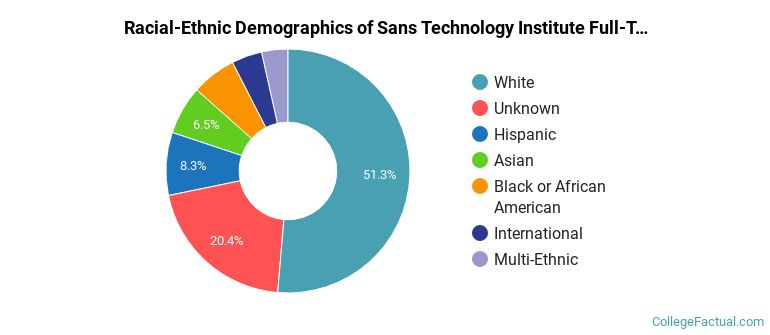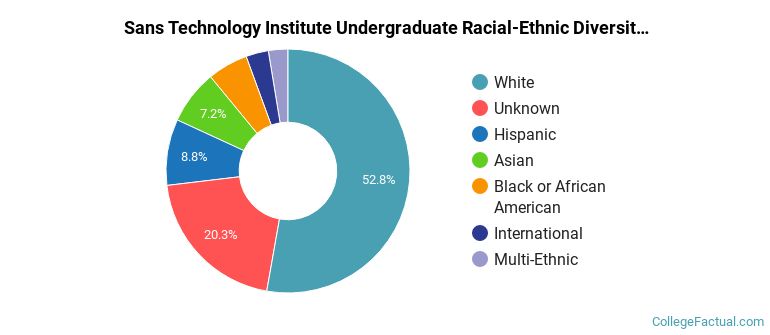 by our College Data Analytics Team
by our College Data Analytics TeamSans Technology Institute total enrollment is approximately 567 students.
See racial/ethnic breakdown for all students.
Male/Female Breakdown of Graduate Students
About 8% of full-time grad students are women, and 92% men.

For the gender breakdown for all students, go here.
Sans Technology Institute Racial-Ethnic Breakdown of Graduate Students

| Race/Ethnicity | Number |
|---|---|
| White | 192 |
| Unknown | 56 |
| Hispanic | 35 |
| Black or African American | 24 |
| Asian | 23 |
| International | 22 |
| Multi-Ethnic | 14 |
| Native Hawaiian or Pacific Islander | 0 |
See racial/ethnic breakdown for all students.

| Race/Ethnicity | Number |
|---|---|
| White | 296 |
| Unknown | 88 |
| Hispanic | 60 |
| International | 36 |
| Black or African American | 35 |
| Asian | 30 |
| Multi-Ethnic | 20 |
| Native Hawaiian or Pacific Islander | 0 |

There are approximately 61 female students and 506 male students at Sans Technology Institute.
Footnotes
*The racial-ethnic minorities count is calculated by taking the total number of students and subtracting white students, international students, and students whose race/ethnicity was unknown. This number is then divided by the total number of students at the school to obtain the racial-ethnic minorities percentage.
References
Department of Homeland Security Citizenship and Immigration Services
Learn more about how College Factual creates their Diversity Rankings.